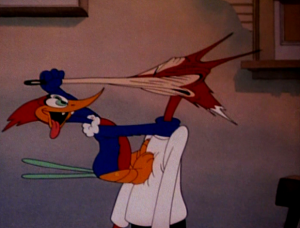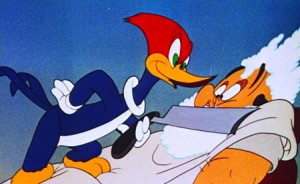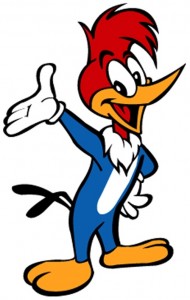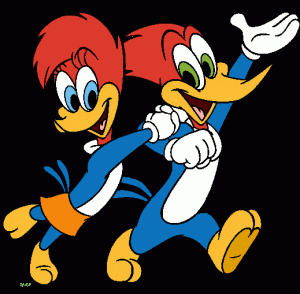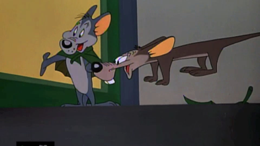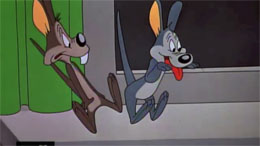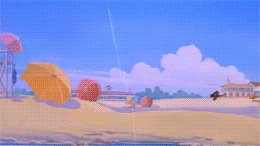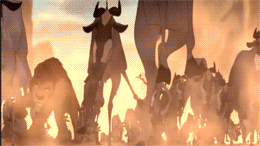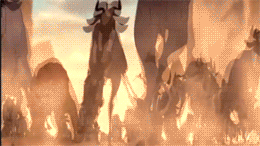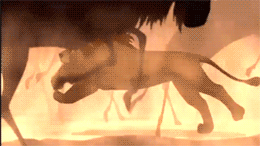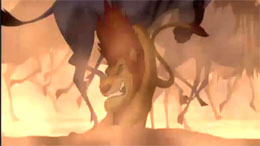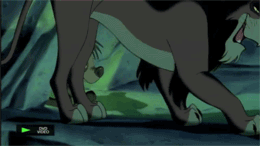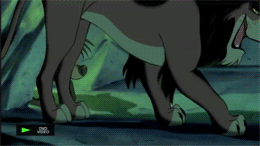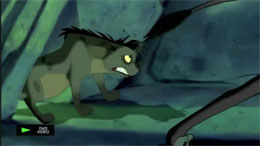Upon first glance, Winsor McCay’s Gertie the Dinosaur (1) does not have a lot going for it. The cartoon, created in 1914, is in black and white, has no vocal sound (you need to read title cards), and has inconsistent animation (the background shimmers from time to time). But despite these qualities, Gertie, even today, is still one of the most celebrated of early American animations. Gertie the Dinosaur possesses many enduring qualities that help it stand out to this day. Some of these qualities include Gertie’s design, personality, her environment, her relationship to McCay, and how they communicate to each other.
http://www.youtube.com/watch?v=OiL4qplyi7Y&feature=related
The first enduring quality about McCay’s animation is Gertie’s design and her similarities to other animals. Though she is a dinosaur, she is animated to move to qualities that are similar to animals we know of today. For example, McCay animated Gertie’s walk to be similar to those of an elephant and she chews up rocks, trees, and pumpkins like a cow. These familiar qualities are recognizable and make her more likeable rather than unusual.
The second quality Gertie possesses is her human-like personality. In many ways, Gertie likes to obey McCay’s commands and is happy to perform them. But she also likes to be stubborn and rebellious. One example is when McCay asks her to lift her left foot, but she snaps at him in rebellion. This is when we can also see that Gertie can also be sensitive. After she snaps, McCay scolds her and she cries. Gertie also has the ability to express fear when Jumbo the Mammoth walks pass her. Gertie’s personality makes her very memorable and an interesting critic on her environment.
The third enduring quality is the environment in which Gertie is placed. McCay’s use of perspective gives Gertie’s environment a three-dimensional look, a quality not too many early animations had. For example, when Gertie walks up to the viewer, she gets bigger, or when Gertie tosses Jumbo into the lake, he gets smaller with distance. The environment was also drawn with great detail and contained many creatures for Getie to interact (or get distracted) with, like the sea serpent, the four-winged lizard, and, of course, Jumbo the mammoth.
The forth quality that make Gertie so enduring is the relationship between McCay and Gertie. I find that McCay and Gertie have a trusting relationship. Although Gertie gets distracted by her environment, McCay knows that she has good behavior and will listen to him. Gertie knows that McCay trust her and knows that McCay will not stay mad at her when she makes a mistake. So, its not that the artist and his art have became friends, but two different personalities, characters, if you will, have formed a bond that will be known for years to come.
One more quality is how Gertie and McCay communicate and understand each other. Even though Gertie cannot speak, McCay is able to communicate to her through verbal commands and is always understood. Gertie communicates to McCay in a variety of ways. For example, Gertie can communicate to him through many facial expressions. She can frown to show she is sad, smile when she is happy, and open her mouth wide to show she is in fear of something. Gertie also communicates to McCay through body language. She may wag the tip of tail to show that she is excited or when she sees something of interest, and she may nod her head to express “yes” or “no” to McCay’s questions. Gertie and McCay’s ability to understand each other through different, yet simple forms of communication shows their willing to understand each other and how strong their relationship is.
Gertie the Dinosaur achieved greatness with these qualities that many animations didn’t have at the time. Gertie inspired a generation of animators and cartoonist and still inspires today, with Gertie’s qualities influencing the many cartoons of yesterday and today.
—————-
(2) “Poster” A BRIEF HISTORY OF GERTIE THE DINOSAUR. 28 Dec 2010. JPEG.

